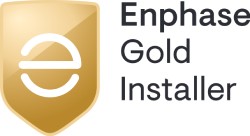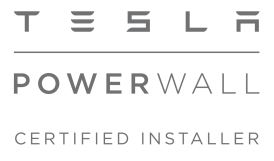- Potentially eliminate your energy costs.
- Sell extra energy you produce back to the energy companies and have the energy companies paying you.
- Federal tax incentives include a 30% tax credit for your system (whatever your system costs take 30% off!)
- This tax credit will decrease to 22% in 2032.
- Wisconsin offers a Renewable Energy Sales Tax Exemption and Property Tax.
- Areas in the United States have seen an average of a 3% increase on property values with solar panels.
- Due to the Property Tax Exemption, this does not raise your property taxes for the increased property value.
Residential incentives in the Inflation Reduction Act: What you need to know
In a 220-189 vote on August 12, 2022, the Inflation Reduction Act of 2022 (IRA) officially passed in the House after passing in the Senate on August 9. The $700 billion bill is the shocking result of negotiations between Senate Majority Leader Chuck Schumer and West Virginia Senator Joe Manchin after the death of the Build Back Better plan in late 2021. As the bill's name suggests, the IRA's goal is to decrease the nation's deficit and in turn, bring down inflation. The Act includes provisions for investing in domestic manufacturing, prescription drug pricing reform, and expanding the Affordable Care Act. But, it is also a historic investment in the fight against climate change. About $369 billion from the Inflation Reduction Act (IRA) will be invested in energy security and climate change and is slated to decrease annual greenhouse gas emissions in 2030 by 1 billion metric tons. Much of the funding is allocated to clean energy industries across the board, but solar energy is one of the biggest winners. This is the first sigh of relief the nation's solar industry let out after a rocky few years - the COVID-19 pandemic stalled installations and ongoing supply chain issues have derailed schedules and increased overall pricing. It seems that things can finally start turning around thanks to the IRA's abundant tax credits for manufacturers and homeowners alike.
Before the passing of the Inflation Reduction Act, energy storage systems only qualified for the federal tax credit if they were paired with a solar energy system. Now, stand-alone energy storage systems can qualify for the tax credit. This is great news for people who don't want to deal with a noisy generator for backup power but also aren't ready to make the switch to solar.
Batteries are subject to the same incentive schedule as solar panel systems, so batteries installed before the end of 2032 will get a tax credit equal to 30% of installation costs, which then falls to 26% in 2033 and 22% in 2034, before expiring completely in 2035.
People who purchase EVs have been able to receive some form of federal incentive for over a decade. The IRA keeps the tax credit intact but changes many of the details surrounding what and who qualifies for the incentive.
To get the full $7,500 credit, the vehicle's battery must have a certain percentage of critical minerals extracted or processed in the U.S. or in a country the U.S. has a free trade agreement with. A certain percentage of battery components must also be manufactured or assembled in North America. If only one of these requirements is met, the vehicle would qualify for half of the tax credit, or $3,750.
Here are some other key changes you need to keep in mind for the EV tax credit as well, including:
- Removal of the 200,000 manufacturer cap, which limited what cars could qualify for the incentive based on how many EVs the manufacturer had sold. Tesla, GM, and Toyota were the only manufacturers to reach this cap.
- Instating an income limit for who can get the credit. Those with a joint gross income over $300,000, or a single filer with gross income over $150,000, cannot receive the incentive.
- Restricting what vehicles are eligible for the tax credit based on the EV's MSRP. Electric vans, SUVs, and pickup trucks that exceed $80,000 will not qualify. All other EVs cannot qualify if their MSRP is above $55,000. This was included to prevent the incentive from being used to purchase luxury cars, where price likely wasn't a buying factor.
- Allowing the tax credit to be transferred to the dealership. This allows the tax credit value to be applied to the down payment of the electric vehicle, instead of having to wait to recoup the costs a year down the road on your taxes.
The battery component and manufacturing provisions have caused a bit of concern among climate and industry leaders, as they're not sure how manufacturers will be able to meet the standards, especially when it comes to sourcing minerals. These requirements would take effect at the start of 2023.
The Act also ushers in a $4,000 tax credit for used electric vehicles. The used clean vehicle tax credit is also subject to income limits - if your joint gross income is above $150,000, or above $75,000 for single filers, you are not eligible for the tax credit.
The used clean vehicle must be purchased through a qualified sale. To be considered a qualified sale, the EV must be purchased from a dealer, cannot be more than $25,000 in price, and must be the vehicle's first ownership transfer. The vehicle model year must be two years older than the year in which the vehicle was acquired.
The Energy Efficiency Home Improvement credit expired at the end of 2021. The IRA brings the credit back to life, extending it until 2033, and bumps up the maximum tax credit amount.
Homeowners can receive a tax credit equal to 30% of qualified energy efficiency improvements during the taxable year, for a total credit up to $1,200 annually. Some of the covered improvements include installing energy-efficient exterior windows and doors, home energy audits, and installing heat pumps.
There are some limits on how much you can claim for these improvements. Energy efficient window replacements cannot receive more than $600, door replacements cannot exceed $150 per door or exceed a total of $600.Every situation is different, it depends on:
1. Amount of your current electric usage.
2. Your address.
3. Potential shading.
4. Position (degrees of due South) of roof or ground area available for installation.
5. Roof or Ground mount system.
All we need is your address and an energy bill. It costs nothing to find out!
There are also rebates for homeowners who switch to electric appliances including:
$1,750 for heat pump water heaters,
$8,000 for heat pump for heating or cooling your home,
$840 for an electric stove, cooktop, range oven, or heat pump clothes dryer,
$4,000 for electric load service center upgrade,
$1,600 for insulation, air sealing, and ventilation, and
$2,500 for electric wiring.
The total incentive cannot exceed $14,000. In order to qualify for the incentive, the appliances or projects must be completed as part of new construction, as a replacement for non-electric appliances, or as a first-time purchase of that appliance. Like the EV tax credits, there's also an income limit for the electric home rebate - the total household income cannot be higher than 150% of the area's median income.
Homeowners aren't the only ones getting perks from the IRA - manufacturers are too. Of the $369 billion going towards climate initiatives, about $60 billion is exclusively for domestic clean energy manufacturing. A portion of this is going towards the Defense Production Act to expand the production of various energy-efficient technologies.
There are also multiple tax credits for manufacturers of solar panels. The majority of the solar provisions mirror what Senator Jon Ossoff put forth in the 2021 Solar Energy Manufacturing for America Act, which sought to expand manufacturing tax credits to help grow the stateside solar manufacturing industry.
These tax credits can be used for the manufacturing of solar modules, solar cells, polysilicon, back sheets, and inverters. Hanwha Solutions, a leading solar panel manufacturer, has already sparked discussions about increasing its presence in the U.S. thanks to the Inflation Reduction Act.
There are also tax credits for EV and battery manufacturing. Encouraging domestic manufacturing can hopefully alleviate future supply chain issues and eventually bring down prices not just for manufacturers, but for consumers, too.
We've covered just a tiny fraction of everything that the Inflation Reduction Act is bringing to the table.
There are some parts of the IRA we aren't crazy about, though, like the easing of oil and gas drilling restrictions. These provisions, likely included by Senator Manchin, aren't ideal, but they don't diminish what the IRA will accomplish in the fight against climate change. For every one ton of emissions estimated to be released as a result of the fossil fuel provisions of The Act, 24 tons will be reduced.
By 2030, greenhouse gas emissions are estimated to be reduced by 42% of 2005 levels thanks to the IRA, which is just shy of the Biden Administration's 2030 emissions reduction goal. But, the Administration's benchmark can still be met as individual states look to meet their climate goals.
The Inflation Reduction Act is essential to unlocking a cleaner, greener, and more affordable future. With solar as one of the star players, we're confident that the sun will continue to shine on homeowners who invest in solar panels for their homes.
Before we get into the solar tax credit specifically, let's go over the basics of how a tax credit works. If you owe $3,000 in federal taxes but are eligible for a tax credit of $1,000, your tax liability drops to $2,000. Pretty straightforward.
The solar tax credit works just like this. The value of the tax credit you earn is based on a percentage of "qualifying costs" of installing solar panels. For 2022, the solar tax credit is worth 30% of the installation costs. So, if your solar installation cost $20,000, you would be eligible for an income tax credit of $6,000.
Solar systems installed in 2033 will receive a tax credit equal to 26% of installation costs. In 2034, the tax credit will be worth 22%. In 2035, the federal solar tax credit will expire altogether.
This means a $20,000 solar system installed in 2022 would receive a credit amount of $6,000, while a system installed for the same price in 2033 would only receive $5,200.
The solar tax credit is non-refundable, meaning if your solar tax credit is worth more than what you owe in taxes, you're not going to get any sort of check or refund for it. But, that doesn"™t mean you won"™t get the full value of it. Any leftover value will carry over and be applied to your taxes the next year.
So, let's say you install solar panels and get a $6,000 tax credit, but you only owe $4,000 in federal income taxes. That leaves you with $2,000 of your tax credit that will be applied to next year's taxes. The tax credit can be carried forward for a maximum of 5 years.
There's also the scenario that you had your taxes withheld from your paycheck, which means you already paid your taxes. In some cases, too much might have been taken out of your paycheck, and now the federal government owes you a refund.
If this is the case, the federal solar tax credit will be added to your tax refund check. But, only the amount up to what you owed. If you owed $8,000 in taxes, but $10,000 was withheld from your paychecks, you'd be getting a $2,000 tax refund from the government.
If in that same year, you installed solar and got a $9,000 tax credit, you would get an additional $8,000 on your refund check - for a total tax refund of $10,000. The remaining $1,000 from the tax credit would carry over to the next year.












